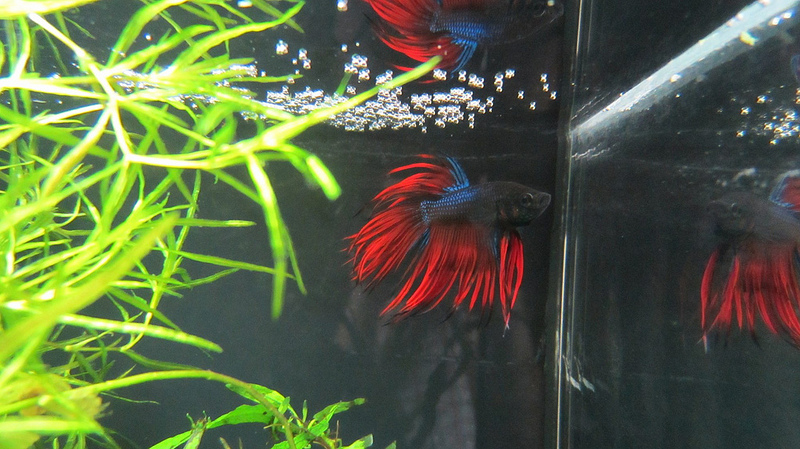Interactions
Betta splendens have been taken from
their wild
habitat of pond and rice patties and turned into a
common household pet throughout the recent years as they are
seen in all the local pet shops, on teachers’ desks, and in our
homes. With its popularity surge, these feisty fish have been
more readily observed and more information has been obtained
about their unique behaivors.
Siamese Fighting Fish
The most common known
fact of these fish is their
aggressive nature, especially in males; it is undeniable. The common
name for this species is the Siamese fighting fish. They are known
for the flashy flaring of the gill opercula. This you may be
familiar
with if you have ever held a mirror up to your fish bowl. The fish
have fast jab-like movements that come off very hostile. They also
have patterns of rapid tail beating when circumstances become
defensive. As it has been seen, these fighting fish chase and bite
one another when put together in tanks or in the wild, which leads
to injuries, or death of one participant. There has
been endless studies done to understand the motives and complexity
of these fights. The main result is that these fish perform in such
a fashion in order to seek dominance. It has been observed that with
an audience present, the fish are more likely to get violent.
When the presence of a female is known to the male, he
uses his aggression to attract the female. It is known that females
prefer a leading or more dominant male (Tillberg, 2010).
Prey
The Betta splendens is a carnivorous fish, meaning it
looks for true meat as its primary food source. As we imagine the
fish in our homes, feeding off a single plant, it is odd to think of
them as natural carnivores. In the wild, they predominately feed
upon insects and larvae, but also enjoy algae that are on the
water’s surface (Hargrove, 1999). Some of these organisms that the
betta fish prey on include
mosquitos,
earthworms,
shrimp,
grasshoppers,
blue-green algae and
spirulina algae. Their mouths happen to be turned
upward at an angle that encourages the fact that they are top
feeders. They use many strategies to capture their food but for the
most part they tend to use quick “snaps” to catch their prey
(Hargrove, 1999). These fish have a fast metabolism causing
them to need many doses of nutrients throughout the day to keep them
moving (Altona et al., 2013).
Predators
The main predator to these fish is in fact, humans.
With the fish industry, these fish are harvested, packaged, and sent
off all around the globe for ornamental purposes. I’m sure most of
us can say we have owned a betta fish at some point in our life. For
centuries now, the fish have also been known to be the victims of
fish fight clubs. As we just discussed, these fish, when together,
can and will fight to the death if motives are present. These clubs
have proven to show interest and entertainment to people from all
across the planet which has caused a constant demand for these
feisty fish. Other predators of the Betta splendens are common water
animals such as
turtles,
snakes,
frogs, and large fish (M. Jaroensutasinee
& K. Jaroensutasinee, 2001). Even
cats
in the wild tend to prey on betta fish.
